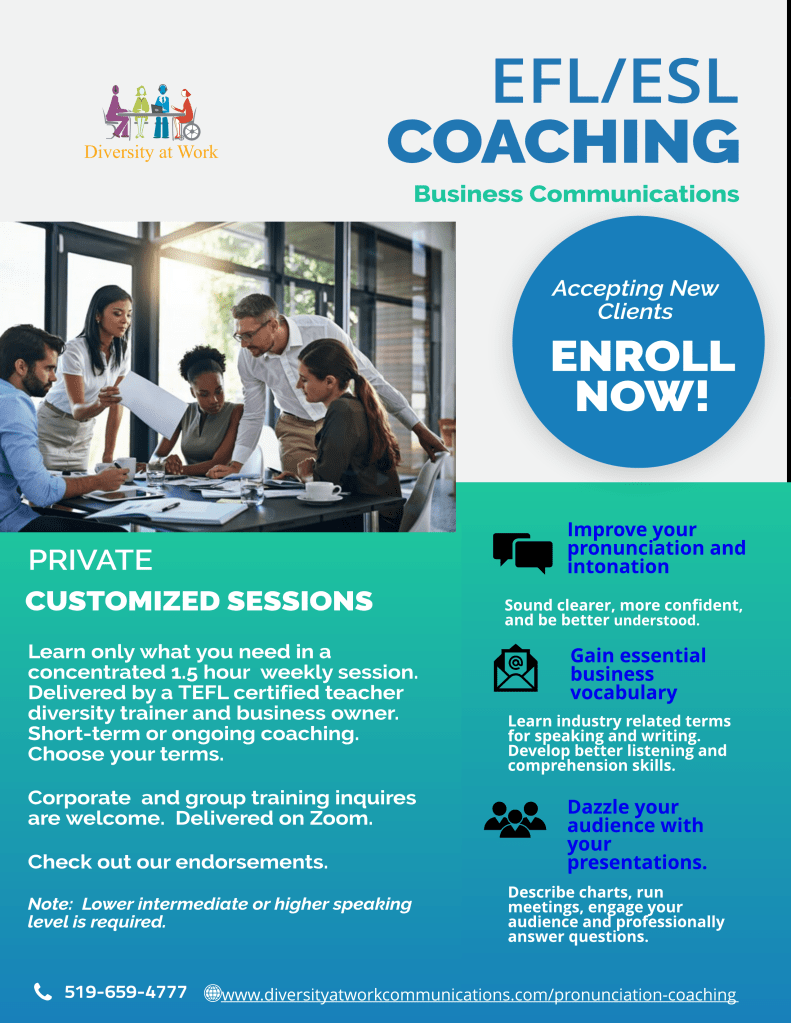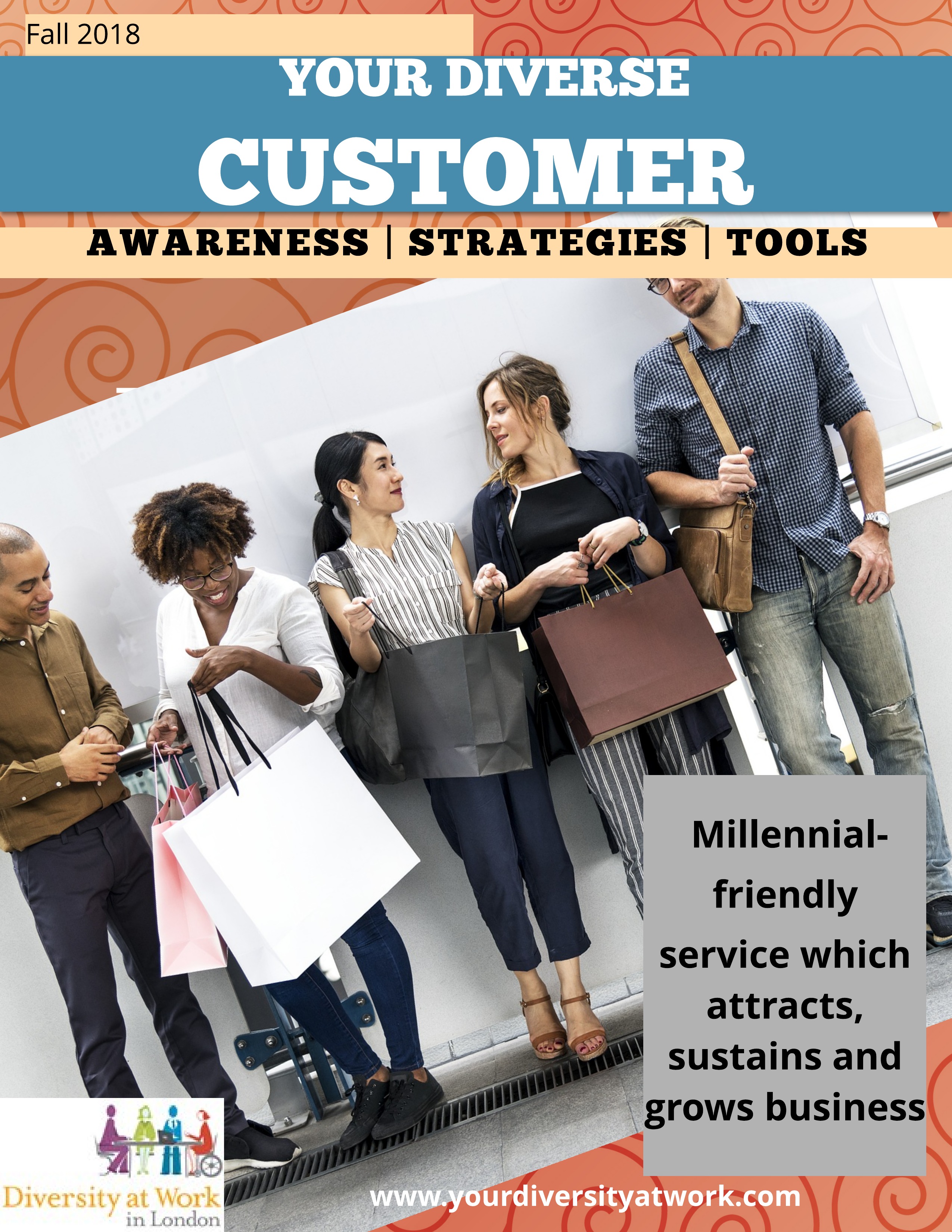Evelina Silveira, President, Diversity at Work
 The proportion of senior citizens (aged 65 and over) in Canada has been increasing over the past 40 years, and this group is becoming a larger segment of our population. According to Stats Canada, the proportion of seniors grew to 14% in 2010.
The proportion of senior citizens (aged 65 and over) in Canada has been increasing over the past 40 years, and this group is becoming a larger segment of our population. According to Stats Canada, the proportion of seniors grew to 14% in 2010.
By 2036, seniors are expected to comprise 25% of our population.
It makes sense, then, that your organization or business should take an inventory to see how well-prepared you are to serve this growing population. You want to maximize your opportunities for sales; you want to provide effective and empathetic service; you need to meet legislative requirements regarding human rights and disabilities. It’s important to note that today’s seniors no longer fit bygone stereotypes. Boomer seniors won’t be cranky, sick, frail, and living in old-age homes as we once knew them. Current seniors are outliving previous generations by being health-conscious and active.
Stats Canada reports here, “The census counted 127,925 seniors (2.6% of the senior population) living in senior residences (72% women; 28% men). The majority (84%) housed in senior residences lived without a spouse/partner. For seniors aged 65-74 in senior residences, 81% were single men and 82% were single women.”
These stats reveal that only a very small percentage of seniors live by themselves, which is due to improved health, more support services, and adaptive devices. These factors contribute to seniors’ independence, improved quality of life, and more opportunities for engagement with others.
All of this information shows that we’re seeing a new profile of an evolving demographic. Today’s seniors don’t conform to our outdated ideas of a senior population. As a result, your business or organization needs to consider the way you and your staff view your senior clients and customers. You need to explore how you can improve the experience of seniors who frequent your organization or business.
This issue of Your Diverse Customer (our training ezine) will inform you and your staff on what you can do to improve the experience of seniors who count among your clients or customers.
Topics included:
- Making your business or service “Senior-Centric”
- The New Baby Boomer and How to Market to Them
- Age-Friendly Business Checklist
- Training resources – videos and links
Order a copy of our TRAINING Ezine today!
Our ezine offers you the tools to enhance your business operations by increasing your awareness of customer demographics; while learning how to provide excellent service with our training tips and resources.
Use the eZine for onboarding activities, departmental meetings as well as part of your customer service training.
Your Diverse Customer – Focus on Older Adults








 d when you hear the term “mental illness”? You probably think about a commercial which is promoting mental health or a person you may know who is struggling with an illness. Alternatively, we may be speaking about you. What we often forget is that people with mental illness come to our organizations and businesses looking for goods and services. For some, their disorder will not impede their interactions. However, for others, they may experience barriers which prevent them from initiating or completing a transaction with you.
d when you hear the term “mental illness”? You probably think about a commercial which is promoting mental health or a person you may know who is struggling with an illness. Alternatively, we may be speaking about you. What we often forget is that people with mental illness come to our organizations and businesses looking for goods and services. For some, their disorder will not impede their interactions. However, for others, they may experience barriers which prevent them from initiating or completing a transaction with you. manage an agency, you will most definitely have Millennials serving your customers /clients. Traditional forms of training are ineffective. Written text is not the way to go! With the multitude of media these days, Millennials expect the training to be engaging, visually-pleasing, authentic and timely.
manage an agency, you will most definitely have Millennials serving your customers /clients. Traditional forms of training are ineffective. Written text is not the way to go! With the multitude of media these days, Millennials expect the training to be engaging, visually-pleasing, authentic and timely. Evelina Silveira, President, Diversity at Work
Evelina Silveira, President, Diversity at Work The proportion of senior citizens (aged 65 and over) in Canada has been increasing over the past 40 years, and this group is becoming a larger segment of our population. According to Stats Canada, the proportion of seniors grew to 14% in 2010.
The proportion of senior citizens (aged 65 and over) in Canada has been increasing over the past 40 years, and this group is becoming a larger segment of our population. According to Stats Canada, the proportion of seniors grew to 14% in 2010.![Diversity[2] (2)](https://diversityandinclusionatwork.com/wp-content/uploads/2013/09/diversity2-2.jpg)



